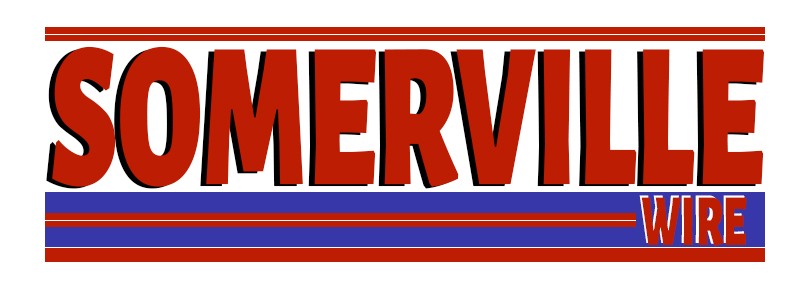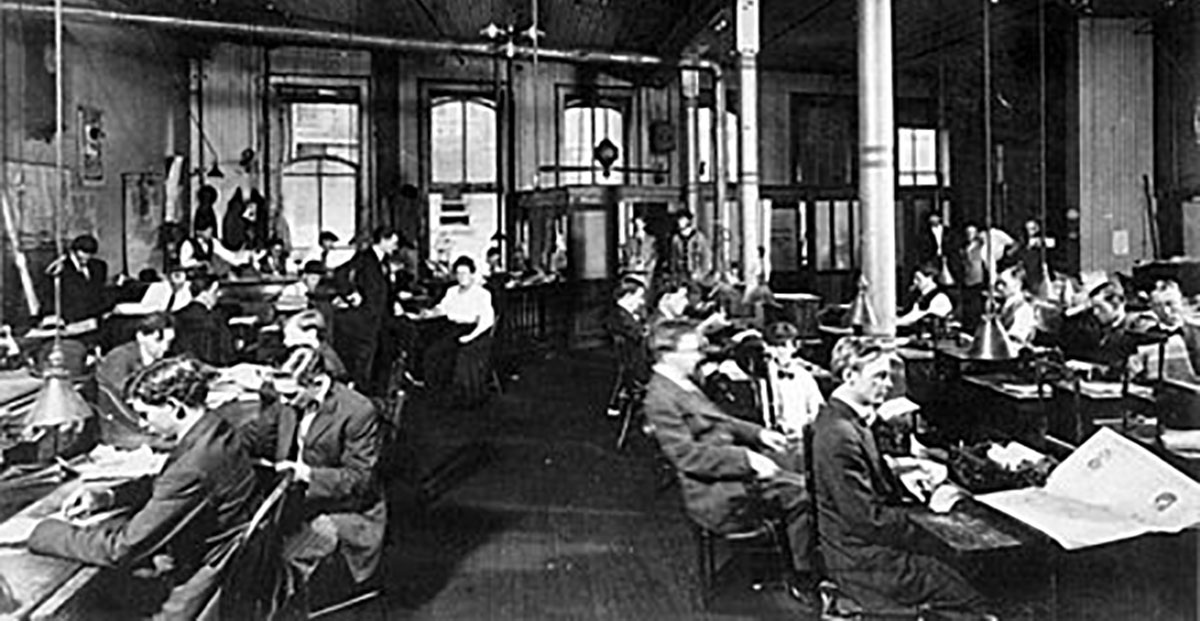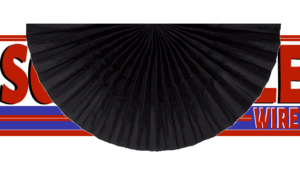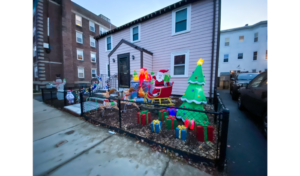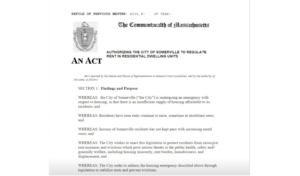The Jamaica-born artist brings inspiration and vibrancy to his projects.
(Somerville Wire) – Michael Talbot is the force behind a Somerville Arts Council sponsored mural going up in East Somerville, outside of Deano’s Pasta. But the artist, who came to the United States in 2012, where he began pursuing his creative dreams, brings animation and bold storytelling to all of his pieces. Talbot also is a children’s book illustrator and graphic novelist, while he has, in addition, produced collaborations with others, such as a project with singer Laurie Akers and a feature on first responders on the frontlines of COVID. We invited Talbot to share about his process as a creator, what fuels his work, and what it means to envision public art.
You’re working on a mural at Deano’s Pasta in East Somerville. Can you describe what it will look like and what inspired its design?
So initially when I saw the call for art, where the wall was located, and heard about Deano’s Pasta and their history, I was immediately inspired to focus on representing and showcasing hands at work – Deano’s being a handmade pasta family business after all. From there I thought of having these hands in the process of creating the pasta to show the energy within the process, and in the background behind it all would be a pattern made up of a variety of different pasta available at Deano’s Pasta. As I was sketching the initial design, I kept having a recurring thought, “You are what you love,” and from there, the idea of having the hands themselves morph into the same pasta that is being kneaded and created came to be.
Do you have a particular interest in public art? What do you hope to communicate to people who are viewing the piece or passing by?
I would say more so now, and it’s gradually increasing! At first I was focused on creating art as items and products that people physically interact with, but since the pandemic, I’ve developed a deeper appreciation for art in public spaces and having environmental experiences with art (murals, painted electrical boxes, window art and signage, etc.). Having art in public spaces and at a large scale is a very different experience than looking at it in a book or on a computer screen, it’s a lot more immersive. My aim/hope is that when people pass by the mural they not only get to see something beautiful and engaging, but that each person finds something within it they can connect to whether standing at a distance or directly in front of the wall.
How does your cultural background from your early life in Jamaica inform the projects that you pursue? When you were growing up, how did you know that you wanted to reach people through your art?
Growing up in Jamaica, I was not very outgoing, nor did I interact with people often. However, over time I found that I was able to connect with more people around me through my art. It was not something I always sought after, but since migrating to the States I have grown to enjoy making those new connections, learning about others, and also teaching others about myself and my experiences through them. Adjusting to a new world, a new culture, a new population has taught me to observe, analyze, and interpret things in a very different way than most and I’d say that has worked in my favor as past clients have mentioned they reached out specifically due to my knowledge and experience from my time growing up in Jamaica.
You’ve also done work as a graphic novelist and children’s book illustrator. What draws you to the comic book world, and how would you describe your approach to this kind of art? What do you try to bring to your illustrations?
I’ve always been a visual learner, and in school whenever I took notes, I found myself drawing out the information instead of writing things down. For me, that was simply the natural way to convey information or to relay a story. Over time, and as mentioned before, I realized it was also a natural way for me to communicate with others around me. There is an underlying flow/movement and progression to sequential art that always intrigued me, and that’s precisely what I aim to capture in my art as well. What determines my approach to each illustration is solely based on what it is for or what story I’m trying to tell with it. There are moments, for example, in a book or comic where something emotional happens; realistically, this could simply be in an instant, but in a sequential format this moment can be extended to adequately tell the true story behind this feeling and how it’s truly affecting a person. This type of story-telling with the addition of timing and pacing is also the main reason that got me interested in, and ultimately drove me to pursue animation as well.
Many of your projects deal with social justice or have themes relating to important social issues. One of them reflected on Ruth Bader Ginsburg’s pursuit of equality, while another was meant to empower women in the inner-city of Jamaica. You had a project that glimpsed into the struggles of first responders on the frontlines of COVID. What drives your exploration of these ideas?
Ironically, I would say that I’ve actively avoided these themes for the most part in my practice, simply for one reason: I want to make art that soothes, inspires, and motivates people to ponder the wonders of life. I definitely acknowledge and understand the importance and gravity of bringing these themes to light, and given the right context I do consider it; this past pandemic period was one such instance. However, I actively make it a point within my art personally, if I can, to not focus on these themes. Rather, I want my art to help people look forward and beyond, to the joys of what can and one day will be; to hang in the balance of reality and wonder.
This article is syndicated by the Somerville Wire municipal news service of the Somerville News Garden project of the Boston Institute for Nonprofit Journalism.
All Somerville Wire articles may be republished by community news outlets free of charge with permission and by larger commercial news outlets for a fee. Republication requests and all other inquiries should be directed to somervillewire@binjonline.org.
SUBSCRIBE TO THE FREE SOMERVILLE WIRE EMAIL NEWSLETTER: https://eepurl.com/hpBYPv
Check out all our social media here: https://linktr.ee/SomervilleWire.
Shira Laucharoen is assistant director of the Boston Institute for Nonprofit Journalism and assistant editor and staff reporter of the Somerville Wire.
